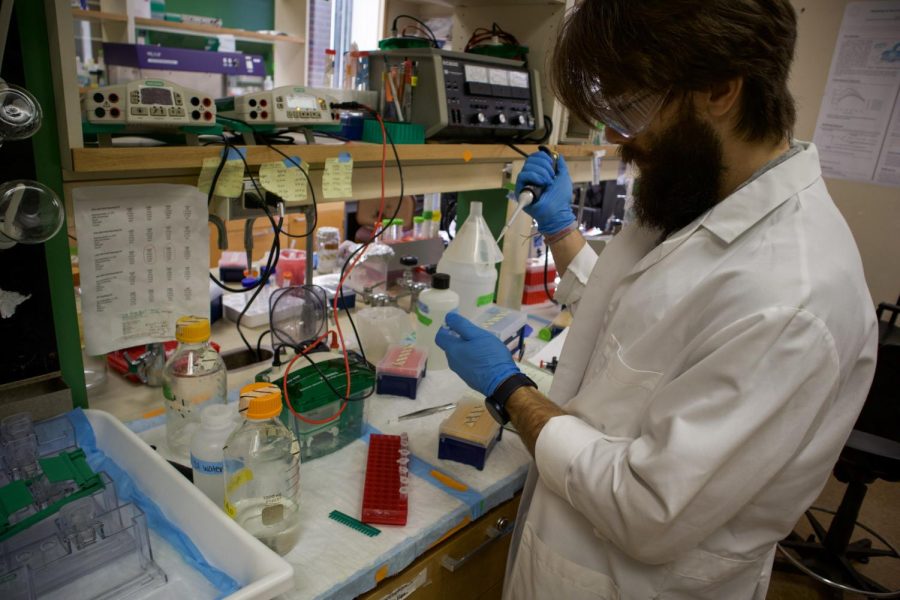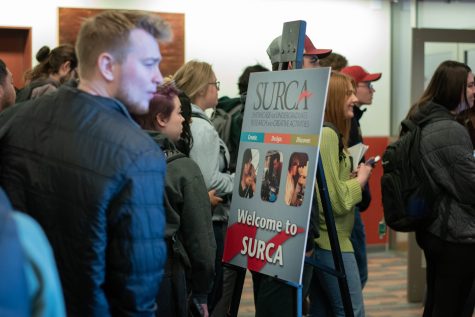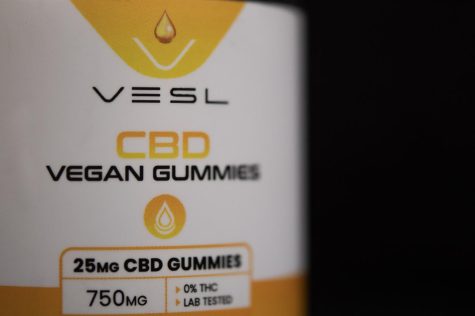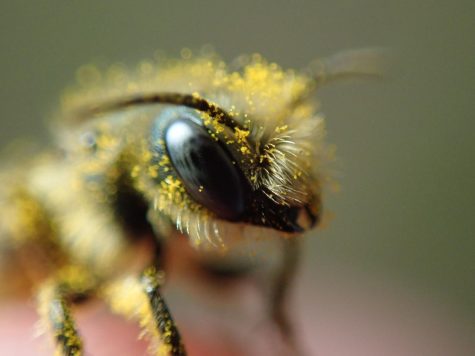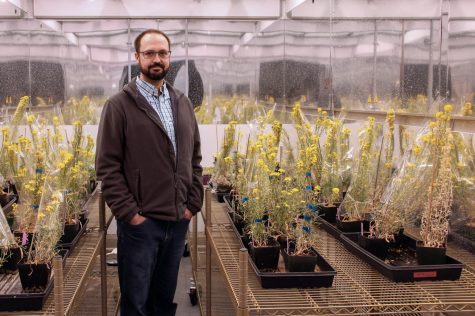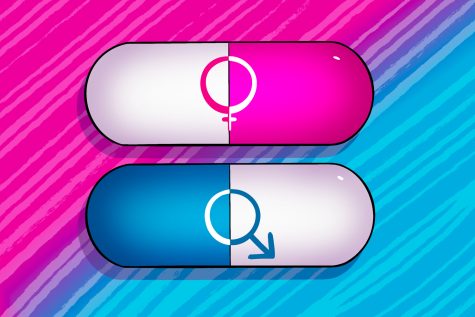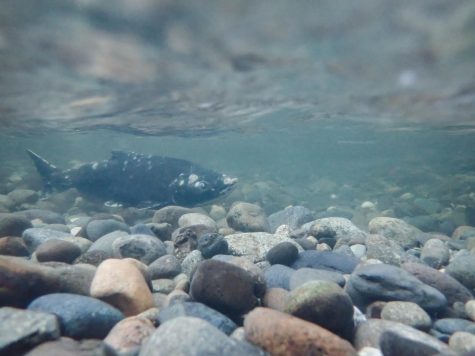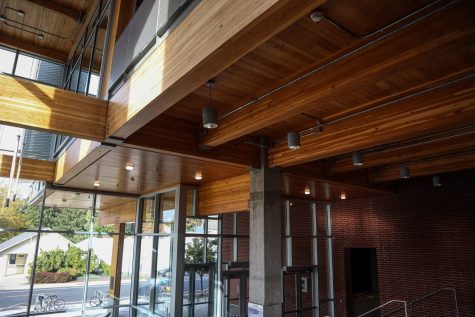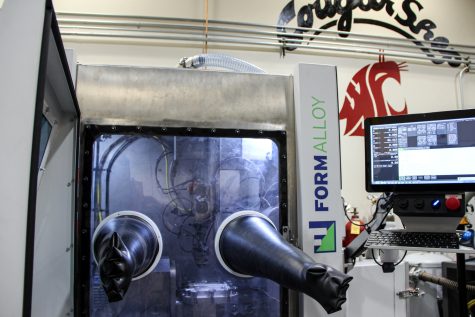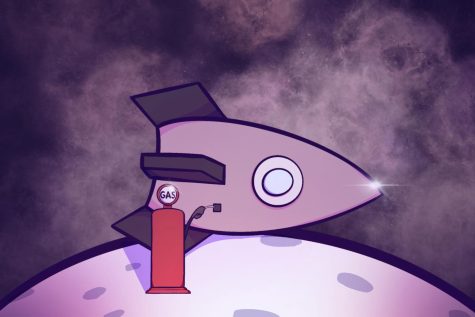The mutated protein that stops a baby’s heart
Strap: Without leiomodin, hearts cannot fully develop
October 20, 2022
An inherited mutation to the protein leiomodin causes babies to develop dilated cardiomyopathy, which often results in early death.
Graduate research assistant Garry Smith said he has always been interested in muscles, and understanding how they function. In addition to studying them, he regularly lifts weights to build his own.
Smith said dilated cardiomyopathy occurs when the heart is stretched and thinned, making it more difficult to circulate blood.
Cardiac muscle, like skeletal muscle, is made up of sarcomeres, the basic unit of muscle, Smith said
Sarcomeres consist of two overlapping filaments, the thick filament containing myosin, and the thin filament containing actin, he said.
“Those two [filaments] kind of interact with each other and pull the sarcomere inward, kind of contracting it. And all of those sarcomeres doing that in unison is what creates muscle contraction,” he said.
Alla Kostyukova, professor of chemical engineering, said leiomodin is an important protein for building thin actin filaments, and it likely plays a role in regulating the length of the filaments.
Early in embryonic development, the sarcomeres will form, but leiomodin is not expressed until a couple of weeks after birth, Smith said.
“So during really early development, the thin filaments of actin are really short,” he said. “When leiomodin comes in, later in development, like two weeks-ish after birth, it elongates or allows the elongation of those filaments to the proper length.”
Without leiomodin, the actin filaments are not elongated, creating less of an overlap of the filaments in the sarcomeres and greatly reducing the muscle’s ability to contract, he said.
For dilated cardiomyopathy patients, this means the heart does not generate enough force to circulate blood.
Patients with mutations to the cardiac leiomodin die shortly after being born, with the only current working solution being a heart transplant, Kostyukova said.
Smith said the mutations are recessive, so parents that are unaffected can still carry it and pass it on to their children.
He said a significant mutation of interest is a DNA nonsense mutation, which is when one amino acid in the protein is swapped for another that causes the gene sequence to end, he said. In leiomodin, this occurs 398 amino acids into the sequence, whereas the functional protein contains about 600 aminos.
When this mutation occurs, however, the cardiac leiomodin is not even expressed, not even in a truncated, or shortened, form, he said. The mRNA is degraded by normal mechanisms in the body before it can be transcribed into a protein, Smith said.
However, by studying the structure of leiomodin, the researchers found that this truncated protein still retains some of its function, he said.
“If there were some kind of treatment that was able to prevent the decay of the RNA so that you can actually get some of that truncated protein, these patients would probably be more well off,” he said.
Smith’s lab utilizes multiple techniques to study leiomodin, including circular dichroism and nuclear magnetic resonance.
They were able to visualize the protein through nuclear magnetic resonance using a strong magnet. They add specialized atoms to the protein and align them in the magnetic field.
The alignment is perturbed by a radio signal and then relaxes and realigns. The relaxation is measured to generate data about where the atoms are in the protein and what structures they form, he said.
They also use a technique called circular dichroism to determine the structure of leiomodin, Smith said. Proteins are made of chains of amino acids that form advanced structures to give the protein its function.
“With circular dichroism, you can see how much of the protein is alpha-helical versus other secondary structures,” he said.
He said another mechanism they track is actin nucleation. Singular actin proteins are globular, or round, Leiomodin brings them together to form a nucleus, so they may undergo polymerization and form filaments.
They also observe leiomodin making bundles of actin filaments, he said, and separate the bundles to observe how much they have bundled.
Leiomodin contains binding sites for actin, but it competes with another protein called tropomodulin to bind, Kostyukova said.
“Tropomodulin has two actin-binding sites and two tropomyosin binding sites, and leiomodin has three actin-binding sites and one tropomyosin binding site,” she said.
So if either leiomodin or tropomodulin are overexpressed, there will be fewer sites for the other to bind, she said.
How this mechanism is regulated is still unknown, she said, but there should be something causing a change in the availability of these proteins.
“I am fascinated by proteins and their structure, it’s beautiful … if you make one small change, it affects everything,” Kostyukova said.

